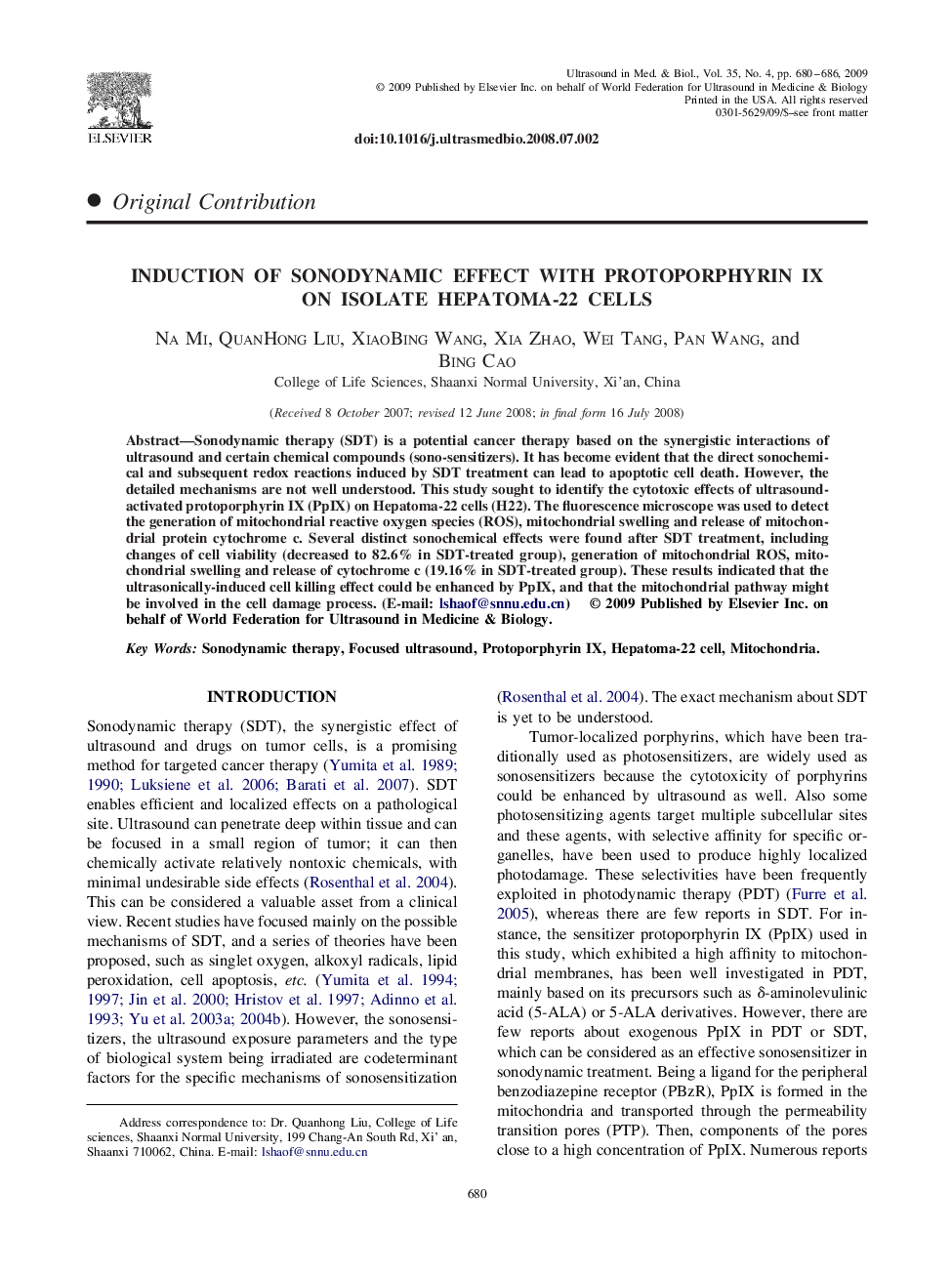| Article ID | Journal | Published Year | Pages | File Type |
|---|---|---|---|---|
| 1762413 | Ultrasound in Medicine & Biology | 2009 | 7 Pages |
Abstract
Sonodynamic therapy (SDT) is a potential cancer therapy based on the synergistic interactions of ultrasound and certain chemical compounds (sono-sensitizers). It has become evident that the direct sonochemical and subsequent redox reactions induced by SDT treatment can lead to apoptotic cell death. However, the detailed mechanisms are not well understood. This study sought to identify the cytotoxic effects of ultrasound-activated protoporphyrin IX (PpIX) on Hepatoma-22 cells (H22). The fluorescence microscope was used to detect the generation of mitochondrial reactive oxygen species (ROS), mitochondrial swelling and release of mitochondrial protein cytochrome c. Several distinct sonochemical effects were found after SDT treatment, including changes of cell viability (decreased to 82.6% in SDT-treated group), generation of mitochondrial ROS, mitochondrial swelling and release of cytochrome c (19.16% in SDT-treated group). These results indicated that the ultrasonically-induced cell killing effect could be enhanced by PpIX, and that the mitochondrial pathway might be involved in the cell damage process. (E-mail: lshaof@snnu.edu.cn)
Related Topics
Physical Sciences and Engineering
Physics and Astronomy
Acoustics and Ultrasonics
Authors
Na Mi, QuanHong Liu, XiaoBing Wang, Xia Zhao, Wei Tang, Pan Wang, Bing Cao,
